
Kilkenny: A Medieval Gem in the Heart of Ireland
Discover Kilkenny, Ireland's medieval marvel, where history, culture, and modern vibrancy collide in a city brimming with charm and character.
Kilkenny, often called the 'Marble City,' is a captivating blend of historical charm and vibrant culture. Nestled in the heart of Ireland, this city offers a unique glimpse into the country's rich past, with its well-preserved medieval architecture and bustling streets lined with colorful shops and cozy cafes. The city's skyline is dominated by the majestic Kilkenny Castle, which has stood proudly since the 12th century. A visit to this iconic landmark provides a fascinating look at Ireland's history and a chance to wander through beautifully maintained gardens. Stroll through the narrow, winding streets of the Medieval Mile, where every corner reveals a new piece of history. From the ancient St. Canice's Cathedral with its round tower offering panoramic views, to the intriguing Rothe House and Garden, a merchant's townhouse dating back to the 1500s. Kilkenny's rich heritage is palpable at every turn, making it a must-visit for history buffs and casual tourists alike. Beyond its historic allure, Kilkenny is also known for its thriving arts scene. The city is home to numerous galleries, theaters, and the renowned Kilkenny Arts Festival, which attracts artists from around the world. Food lovers will delight in the local culinary offerings, from traditional Irish fare to modern gastronomy. And don't forget to enjoy a pint of Smithwick's, brewed in Kilkenny for over 300 years, at one of the city's many inviting pubs.
Local tips in Kilkenny
- Visit Kilkenny Castle early in the morning to avoid crowds and enjoy a peaceful stroll in the gardens.
- Wear comfortable shoes for exploring the Medieval Mile as the cobblestone streets can be uneven.
- Check the local events calendar for festivals or live music performances during your stay.
- Try the local delicacies at the Kilkenny Farmers' Market, held every Thursday and Saturday.
- Climb St. Canice's Cathedral round tower for breathtaking views of the city and surrounding countryside.
Kilkenny: A Medieval Gem in the Heart of Ireland
Kilkenny, often called the 'Marble City,' is a captivating blend of historical charm and vibrant culture. Nestled in the heart of Ireland, this city offers a unique glimpse into the country's rich past, with its well-preserved medieval architecture and bustling streets lined with colorful shops and cozy cafes. The city's skyline is dominated by the majestic Kilkenny Castle, which has stood proudly since the 12th century. A visit to this iconic landmark provides a fascinating look at Ireland's history and a chance to wander through beautifully maintained gardens. Stroll through the narrow, winding streets of the Medieval Mile, where every corner reveals a new piece of history. From the ancient St. Canice's Cathedral with its round tower offering panoramic views, to the intriguing Rothe House and Garden, a merchant's townhouse dating back to the 1500s. Kilkenny's rich heritage is palpable at every turn, making it a must-visit for history buffs and casual tourists alike. Beyond its historic allure, Kilkenny is also known for its thriving arts scene. The city is home to numerous galleries, theaters, and the renowned Kilkenny Arts Festival, which attracts artists from around the world. Food lovers will delight in the local culinary offerings, from traditional Irish fare to modern gastronomy. And don't forget to enjoy a pint of Smithwick's, brewed in Kilkenny for over 300 years, at one of the city's many inviting pubs.
When is the best time to go to Kilkenny?
Iconic landmarks you can’t miss
Kilkenny Castle
Discover the grandeur of Kilkenny Castle, a historical landmark that embodies Ireland's rich heritage and stunning architecture in a picturesque setting.

Kilkenny Castle Park
Explore the enchanting Kilkenny Castle Park, where history and nature intertwine in a breathtaking setting, perfect for tourists seeking beauty and tranquility.
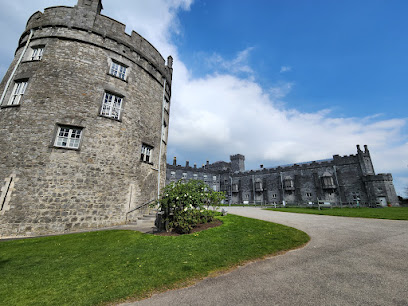
Kyteler's Inn
Discover Kyteler's Inn in Kilkenny, where history meets Irish cuisine in a lively gastropub atmosphere.
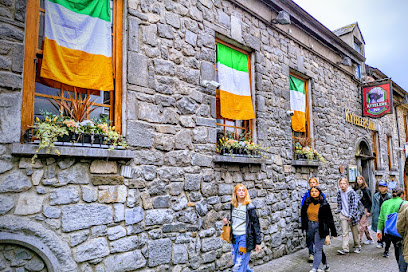
MacDonagh Junction Shopping Centre
Shop, dine, and unwind at MacDonagh Junction Shopping Centre, Kilkenny's premier shopping destination offering diverse stores and culinary delights.
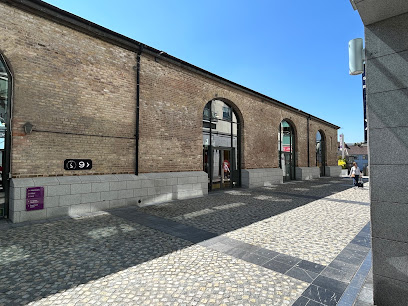
St Canice's Cathedral
Experience the historical and architectural beauty of St Canice's Cathedral, a must-visit attraction in Kilkenny, Ireland.
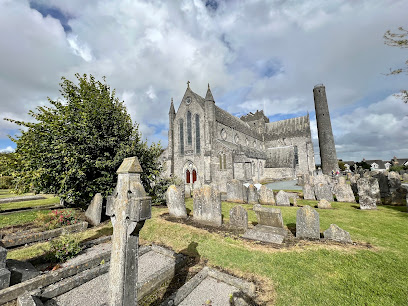
Smithwick's Experience
Explore the legacy of Smithwick's in Kilkenny - a captivating brewery and heritage museum experience that celebrates Ireland's brewing history.

Lanigan's Bar
Discover the vibrant spirit of Kilkenny at Lanigan's Bar, a lively gastropub offering delicious food, refreshing drinks, and live music in a welcoming atmosphere.
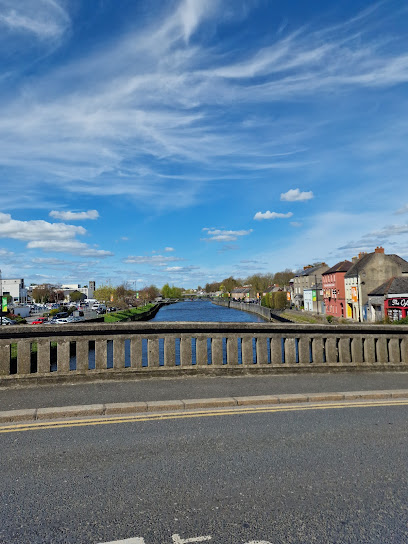
Marble City Bar and Tea Rooms
Discover the vibrant atmosphere and delightful menu at Marble City Bar and Tea Rooms in Kilkenny, where tradition meets modern Irish hospitality.
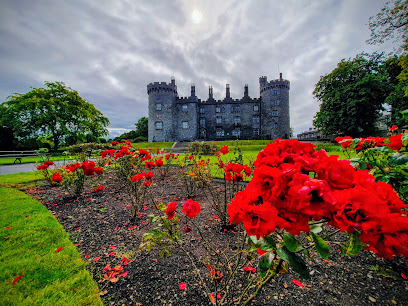
Billy Byrnes Gastro Bar & Venue
Discover the vibrant atmosphere and delightful culinary offerings at Billy Byrnes Gastro Bar & Venue in Kilkenny, a true taste of local culture.
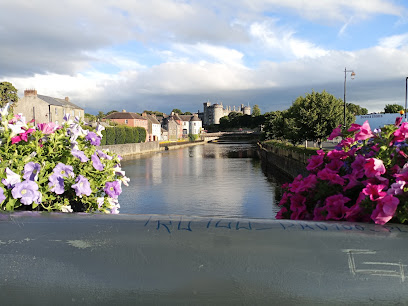
Dunmore Cave
Explore the depths of history and nature at Dunmore Cave, a captivating underground attraction in Kilkenny, Ireland, rich in geological wonders and ancient tales.
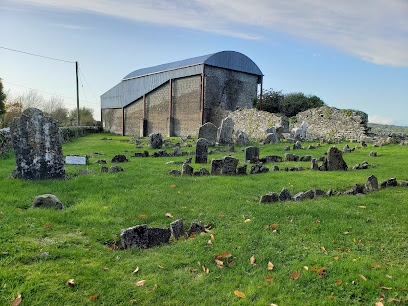
St. Mary’s Medieval Mile Museum
Discover Kilkenny's medieval history at St. Mary’s Medieval Mile Museum, a captivating archaeological haven filled with intriguing artifacts and stories.
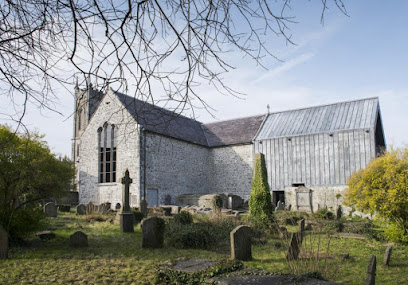
Woodstock Gardens & Arboretum
Experience the enchanting beauty of Woodstock Gardens & Arboretum, a serene park in Co. Kilkenny, perfect for nature lovers and history enthusiasts.

Tynan's Bridge House Bar
Experience authentic Irish hospitality at Tynan's Bridge House Bar in Kilkenny, where local culture and a vibrant atmosphere await every visitor.
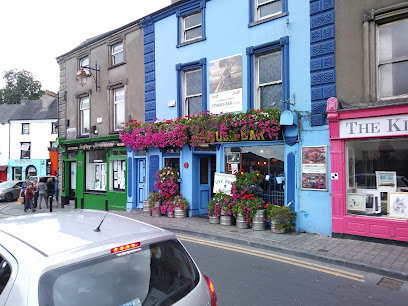
Jerpoint Abbey
Explore the medieval charm of Jerpoint Abbey, a historic Cistercian monastery nestled in the picturesque County Kilkenny, Ireland.
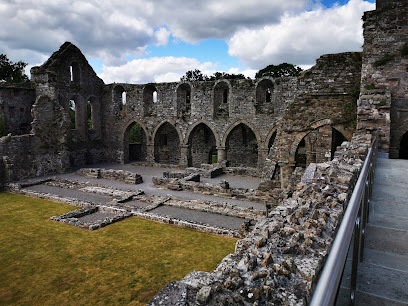
Butler House & Garden
Experience the charm of Butler House & Garden in Kilkenny, where history meets tranquility amidst stunning gardens and elegant accommodations.

Unmissable attractions to see
Rock of Cashel
Discover the Rock of Cashel, an iconic historical landmark in Ireland, rich with medieval architecture and breathtaking landscapes.
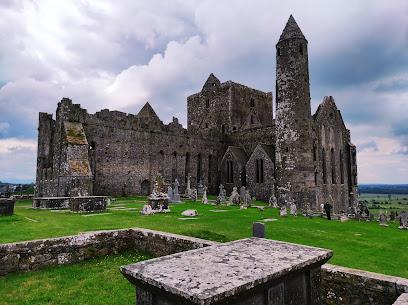
Kilkenny Castle
Explore Kilkenny Castle, a historical gem in Ireland, where medieval architecture meets lush gardens and captivating stories of the past.
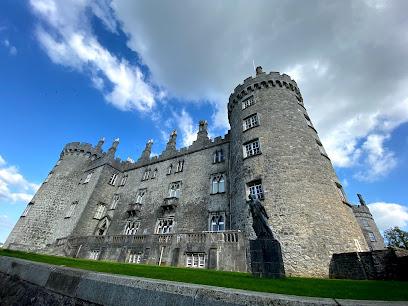
House of Waterford
Discover the artistry of Waterford Crystal at the House of Waterford, Ireland's premier destination for glassmaking heritage and exquisite craftsmanship.
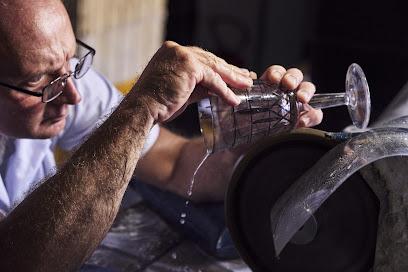
Kyteler's Inn
Experience the rich history and vibrant atmosphere of Kyteler's Inn, Kilkenny's iconic Irish pub and gastropub known for delicious local cuisine and live music.
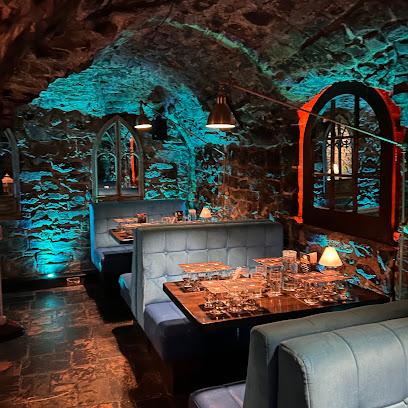
Dunbrody Famine Ship Experience
Explore the Dunbrody Famine Ship Experience in New Ross, Co. Wexford, and uncover the poignant stories of Irish emigration during the Great Famine.
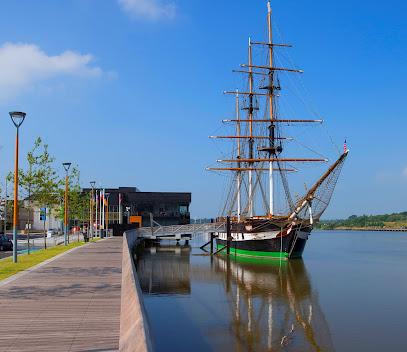
Castlecomer Discovery Park
Experience the thrill of zip-lining, boating, and exploring the rich history at Castlecomer Discovery Park in County Kilkenny, Ireland.
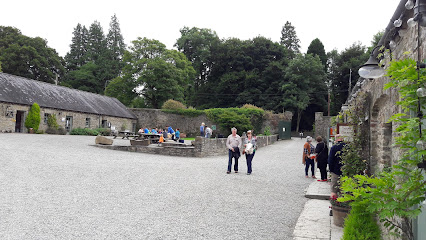
St Canice's Cathedral
Explore the medieval charm and spiritual heritage of St Canice's Cathedral in Kilkenny, Ireland, a must-visit destination for history lovers.
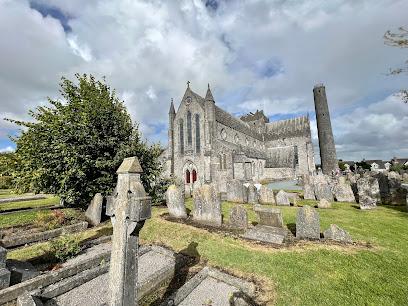
The National Reptile Zoo
Explore The National Reptile Zoo in Kilkenny, a captivating attraction showcasing a diverse collection of reptiles from around the world.
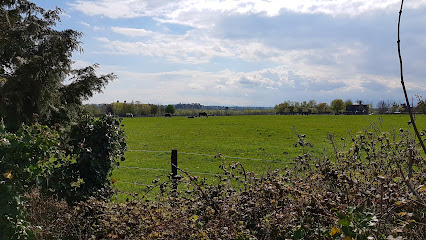
Waterford Castle Hotel & Golf Resort
Experience luxury and history at Waterford Castle Hotel & Golf Resort, a stunning private island retreat in County Waterford with world-class amenities.
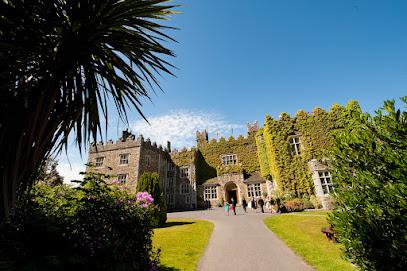
Smithwick's Experience
Uncover the brewing legacy of Smithwick's at this immersive heritage museum in Kilkenny, where history meets taste.
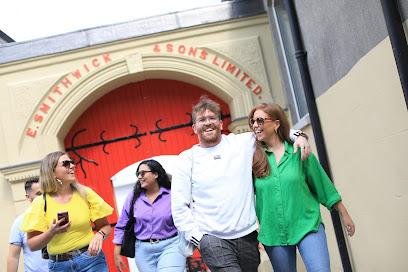
Waterford Treasures: Medieval Museum (Treasures of Medieval Waterford)
Explore the Viking Triangle’s rich history at Waterford Treasures: Medieval Museum, featuring artifacts that tell the story of Ireland’s medieval era.
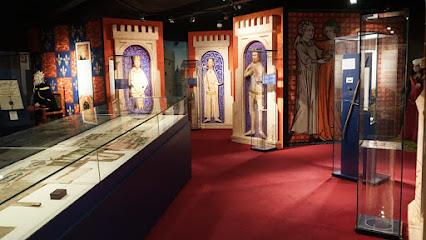
St. Mary’s Medieval Mile Museum
Discover Kilkenny's rich medieval history at St. Mary’s Medieval Mile Museum, where fascinating artifacts and stories await every visitor.
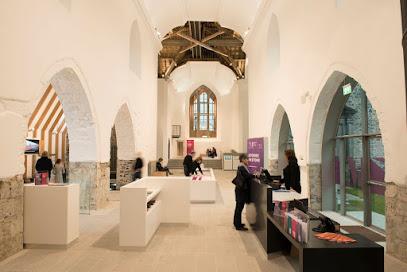
Dunmore Cave
Explore the enchanting Dunmore Cave in Kilkenny, a historical and geological wonder that reveals Ireland's ancient past.
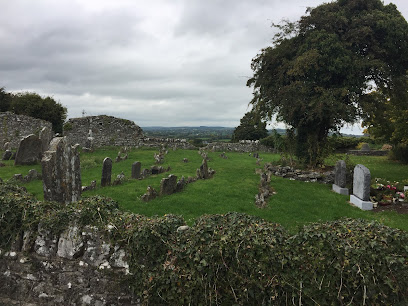
St. Mary's Cathedral
Discover the beauty and serenity of St. Mary's Cathedral in Kilkenny, a stunning Gothic masterpiece rich in history and architectural splendor.
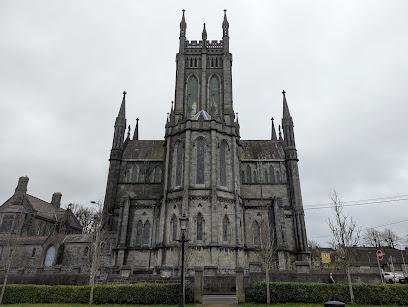
Mount Congreve Gardens
Discover the enchanting beauty of Mount Congreve Gardens, a must-visit botanical haven in Co. Waterford, ideal for nature lovers and families.
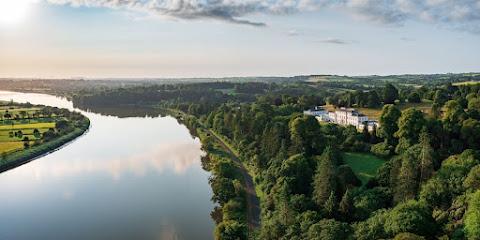
Essential places to dine
Kyteler's Inn
Discover Kyteler's Inn: A historic pub in Kilkenny serving traditional Irish cuisine and vibrant entertainment since the 12th century.
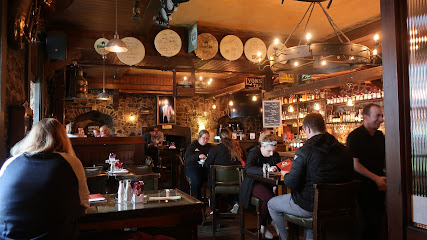
Matt The Millers Bar & Restaurant
Discover the best gastropub experience in Kilkenny at Matt The Millers - where great food meets live music!
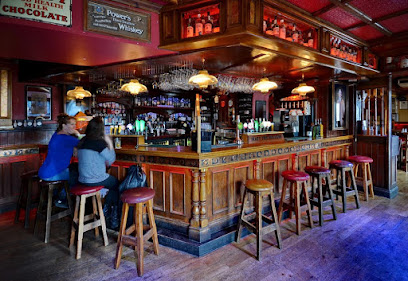
Langtons Hotel Kilkenny
Discover the charm of Langtons Hotel Kilkenny - where traditional Irish hospitality meets modern luxury in the heart of Kilkenny.
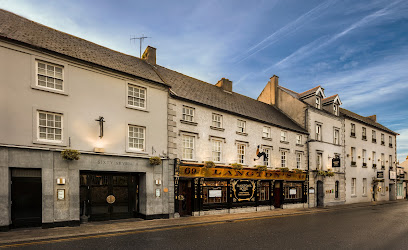
Paris Texas Bar and Restaurant
Experience the vibrant flavors of Kilkenny at Paris Texas Bar and Restaurant - where modern gastronomy meets lively atmosphere.
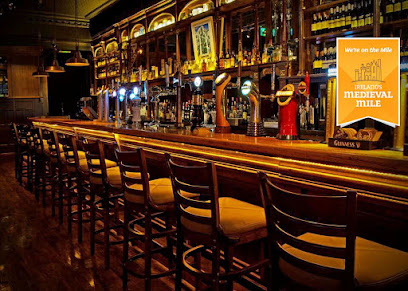
Left Bank
Discover Left Bank: A charming gastropub in Kilkenny offering exquisite food, crafted cocktails, and live music for an unforgettable experience.
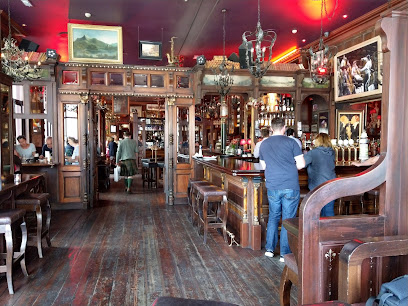
Kilkenny River Court Hotel
Discover luxury and comfort at Kilkenny River Court Hotel by the scenic River Nore – where elegance meets tradition in Ireland's medieval capital.

Ristorante Rinuccini
Experience authentic Italian cuisine at Ristorante Rinuccini in Kilkenny – where every dish tells a story.
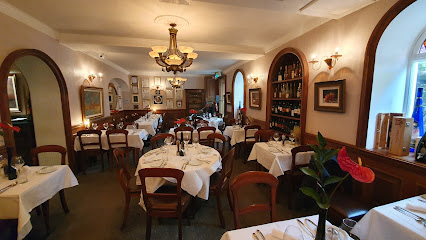
Lanigan's Bar
Discover the vibrant atmosphere and culinary delights at Lanigan's Bar in Kilkenny - where traditional Irish culture meets modern dining.
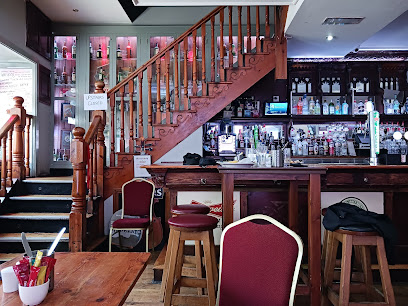
Aroi Asian Fusion - Kilkenny
Experience the rich tapestry of flavors at Aroi Asian Fusion in Kilkenny, where authentic Asian cuisine meets warm hospitality.
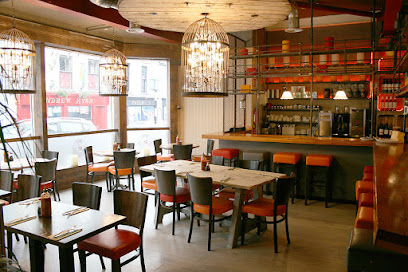
Billy Byrnes Gastro Bar & Venue
Discover Billy Byrnes Gastro Bar & Venue in Kilkenny - where exceptional food meets vibrant atmosphere amidst beautiful gardens.
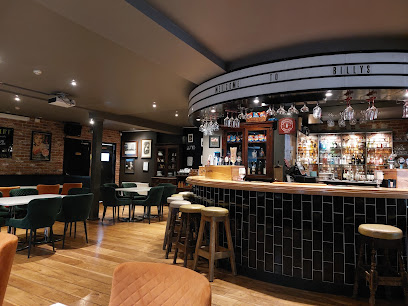
Petronella
Discover Petronella: A Modern European restaurant offering exquisite flavors and a warm atmosphere in the heart of Kilkenny.
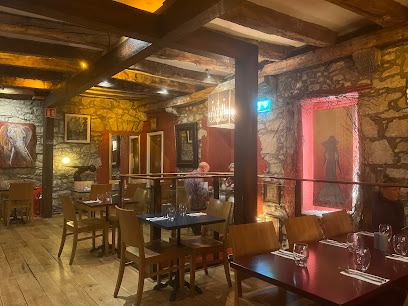
The Fig Tree Restaurant Kilkenny
Experience delightful brunches and diverse cuisine at The Fig Tree Restaurant in Kilkenny—perfect for every palate including vegan and gluten-free options.
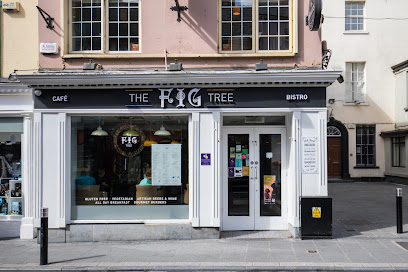
Butcher Restaurant
Discover Kilkenny's finest steakhouse at Butcher Restaurant - where exceptional quality meets unforgettable flavors.
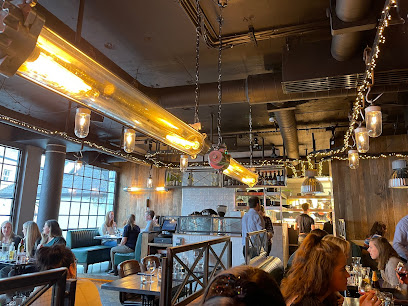
The Field Bar & Restaurant
Experience the best of Irish cuisine at The Field Bar & Restaurant in Kilkenny - where tradition meets modern gastronomy.
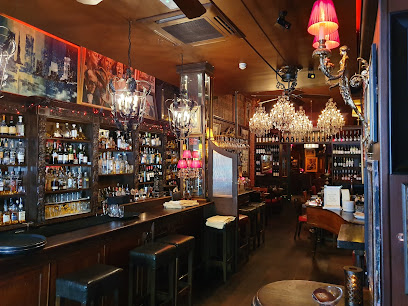
Italian Connection
Experience the true essence of Italy at Italian Connection in Kilkenny—where authentic flavors meet warm hospitality.
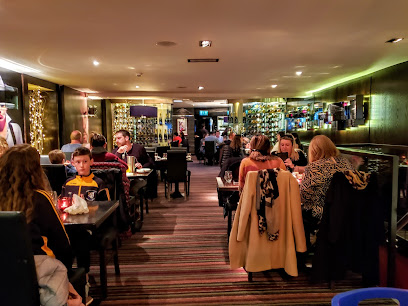
Markets, malls and hidden boutiques
MacDonagh Junction Shopping Centre
Experience shopping like never before at MacDonagh Junction Shopping Centre, Kilkenny's premier retail destination with diverse options for all visitors.
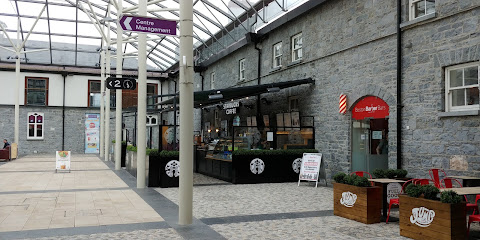
Market Cross Shopping Centre
Discover Kilkenny's vibrant shopping scene at Market Cross Shopping Centre with diverse shops and delightful eateries for a memorable experience.
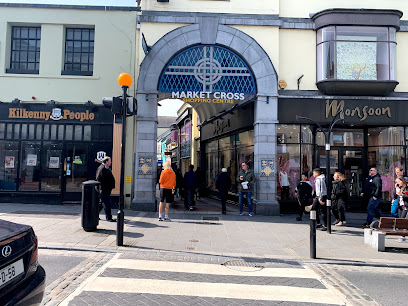
Penneys
Explore stylish and affordable clothing at Penneys in Kilkenny's vibrant Market Cross Shopping Centre, where fashion meets value.
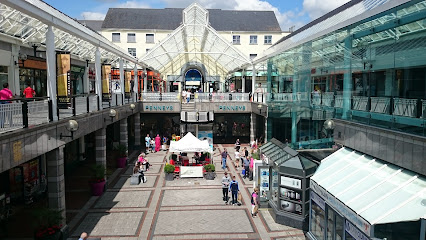
Newpark Shopping Centre
Explore the Newpark Shopping Centre in Kilkenny - a premier destination for shopping, dining, and family fun in the heart of Ireland.
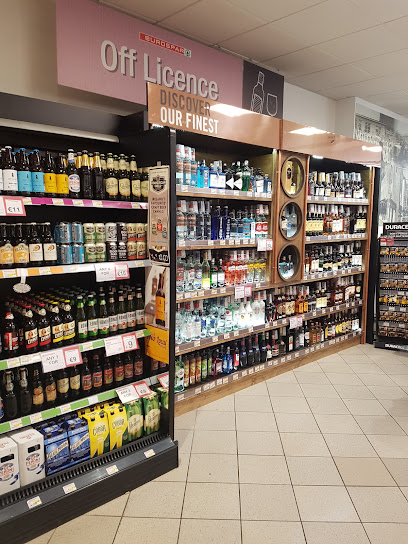
TK Maxx
Discover unbeatable fashion deals at TK Maxx in Kilkenny, where quality meets affordability in a vibrant shopping atmosphere.
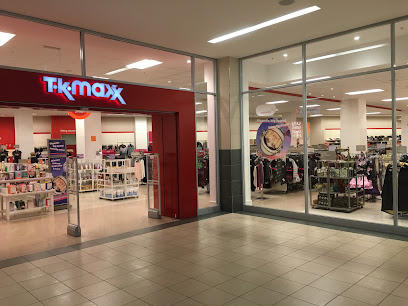
Loughboy Shopping Centre
Discover the charm of local shopping at Loughboy Shopping Centre in Kilkenny, where variety meets convenience!
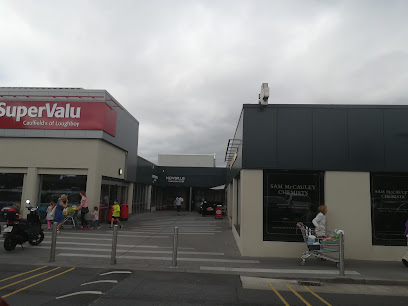
Valley of Roses Kilkenny Ltd
Discover the enchanting fragrances of the Valley of Roses in Kilkenny, where nature and artistry combine to create unforgettable scents.
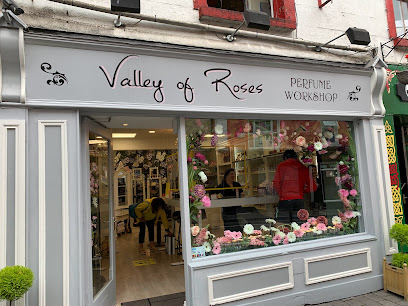
Folkster Kilkenny & Folkster Bridal
Explore Folkster Kilkenny & Folkster Bridal for unique vintage and contemporary women's clothing, perfect for every occasion from casual outings to bridal dreams.
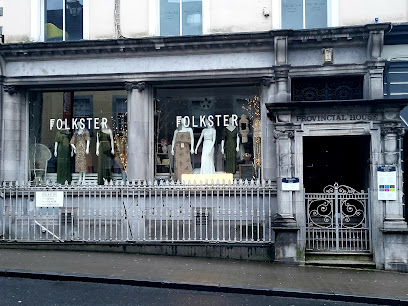
Carrolls Irish Gifts
Explore Carrolls Irish Gifts in Kilkenny for a wide array of authentic Irish souvenirs and handcrafted treasures that capture the essence of Ireland.
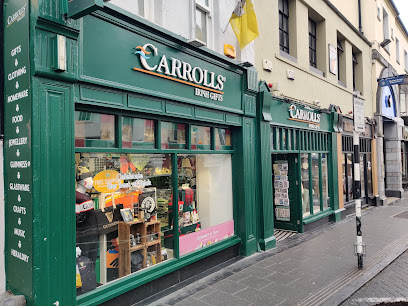
Paul's
Discover unique fashion and local artistry at Paul's, Kilkenny's charming department store for tourists and locals alike.
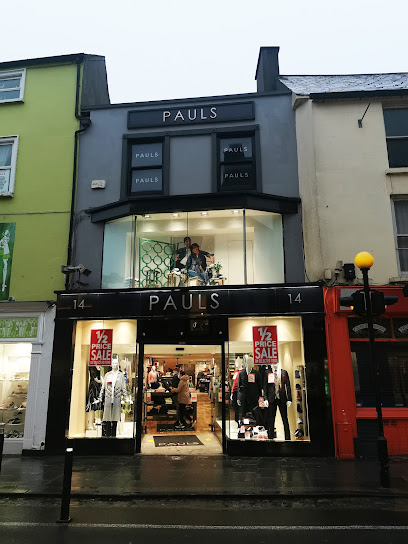
The Wine Centre
Explore Kilkenny's premier liquor store, The Wine Centre, offering a curated selection of wines and craft beers in a welcoming atmosphere.
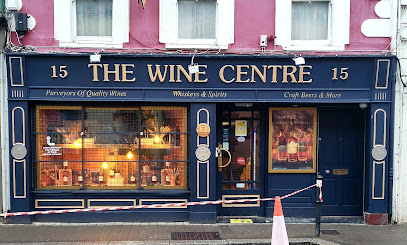
Good's
Explore Good's Department Store in Kilkenny for an unforgettable shopping experience, featuring local Irish products and stylish clothing.
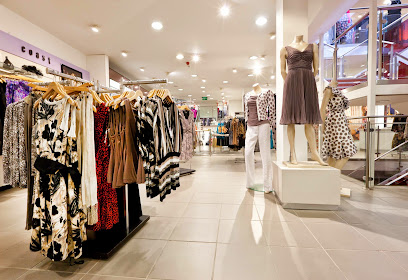
Guineys
Explore Guineys in Kilkenny for a diverse range of affordable clothing, baby goods, and home essentials in a friendly shopping environment.
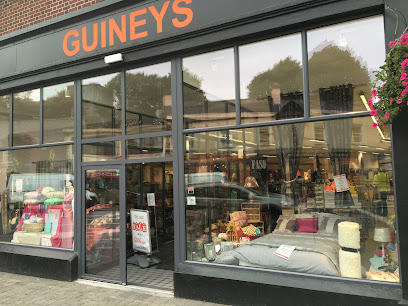
Kilkenny Design Centre
Discover the essence of Irish craftsmanship and design at the Kilkenny Design Centre, a vibrant hub for shopping and culinary delights.
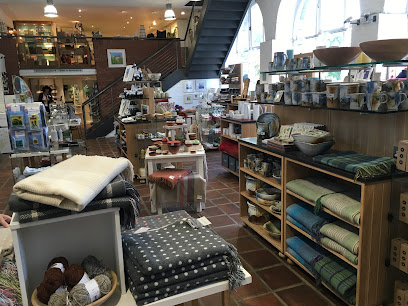
Breda's Gift Shop
Discover unique Irish gifts at Breda's Gift Shop in Kilkenny, a charming destination filled with local crafts and treasures that capture the spirit of Ireland.
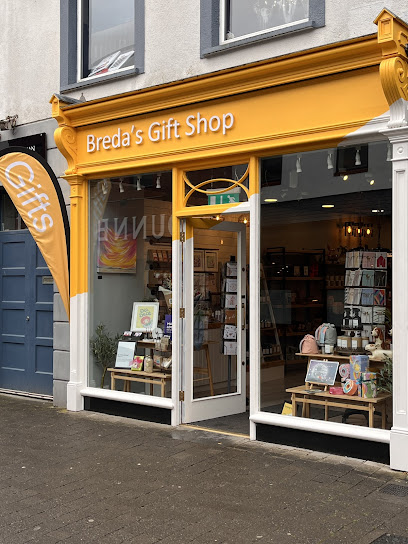
Essential bars & hidden hideouts
Kyteler's Inn
Discover the charm of Kyteler's Inn, a historic Irish pub in Kilkenny, serving traditional dishes and vibrant live music in a unique atmosphere.

Matt The Millers Bar & Restaurant
Discover the heart of Kilkenny at Matt The Millers, a vibrant gastropub offering delicious food, local brews, and live music in a welcoming atmosphere.
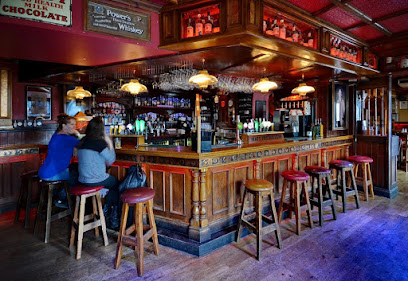
Paris Texas Bar and Restaurant
Discover Kilkenny's culinary gem at Paris Texas Bar and Restaurant, a gastropub combining delicious food, refreshing drinks, and a vibrant atmosphere.
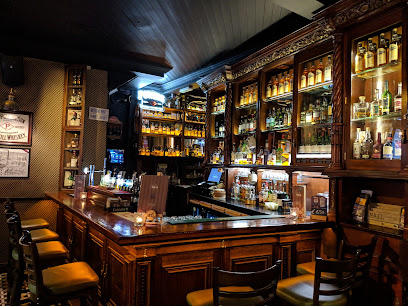
Left Bank
Discover Kilkenny's Left Bank, a lively gastropub offering exquisite local cuisine, crafted cocktails, and vibrant live music for an unforgettable experience.
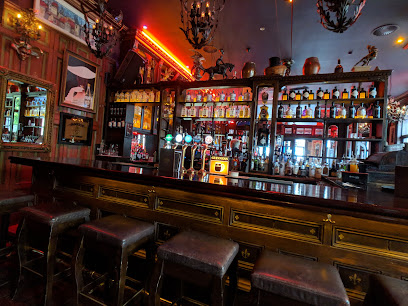
Lanigan's Bar
Discover the vibrant atmosphere of Lanigan's Bar in Kilkenny, a perfect blend of Irish pub culture and modern gastropub delights.
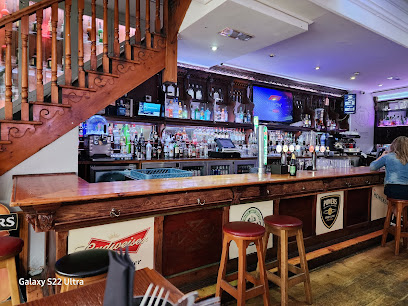
Marble City Bar and Tea Rooms
Discover the vibrant atmosphere and delicious offerings at Marble City Bar and Tea Rooms, a must-visit pub in the heart of Kilkenny.
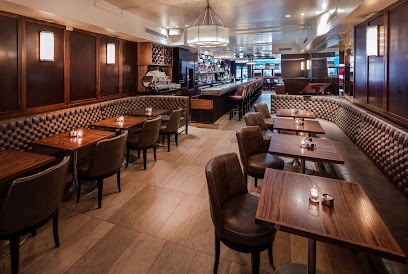
Billy Byrnes Gastro Bar & Venue
Discover the flavors of Kilkenny at Billy Byrnes Gastro Bar & Venue, where culinary excellence meets vibrant entertainment in a charming atmosphere.
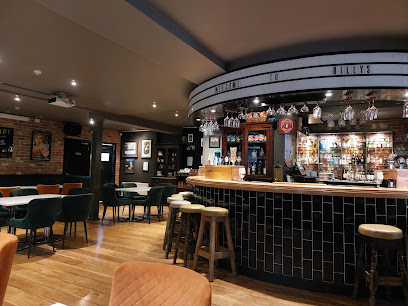
Tynan's Bridge House Bar
Experience authentic Irish hospitality at Tynan's Bridge House Bar in Kilkenny, where tradition meets vibrant social life.
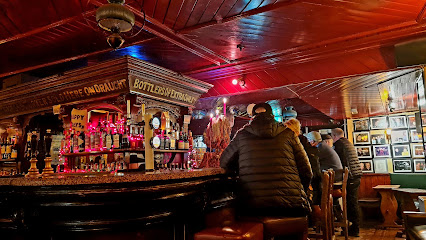
Biddy Early's
Experience the vibrant nightlife of Kilkenny at Biddy Early's, where exquisite cocktails and karaoke create unforgettable memories.
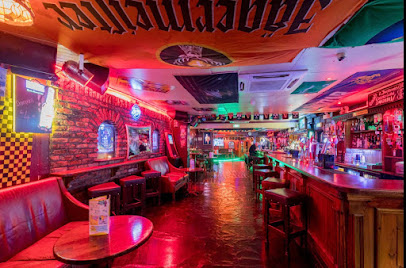
Cleere's Bar & Theatre
Experience the vibrant atmosphere of Cleere's Bar & Theatre, where delicious gastropub fare meets live music in the heart of Kilkenny.

The Pumphouse
Experience the best of Kilkenny nightlife at The Pumphouse, a lively bar and grill offering live music, delicious food, and local charm.
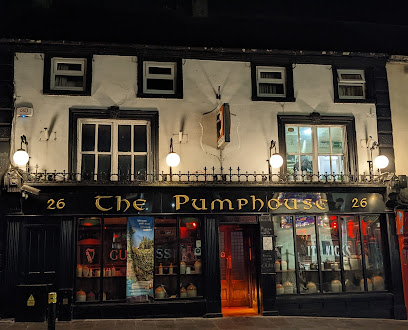
Ryan's Bar
Discover the lively spirit of Kilkenny at Ryan's Bar, a premier live music venue offering an unforgettable night of entertainment and local culture.
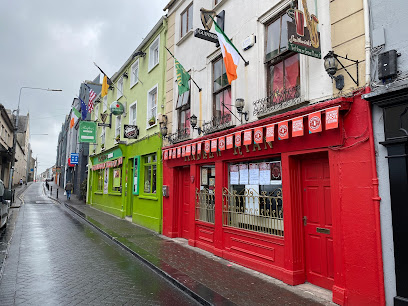
Brogan's Yard
Experience the vibrant nightlife of Kilkenny at Brogan's Yard, a cocktail bar known for its creative drinks and lively atmosphere.
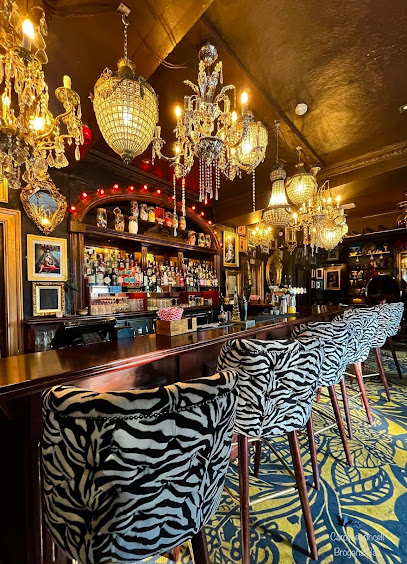
The Dylan Whisky Bar
Discover The Dylan Whisky Bar in Kilkenny – a vibrant cocktail bar and live music venue offering an extensive selection of fine whiskies.
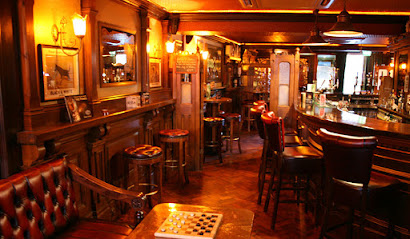
An Poc Fada
Discover the vibrant atmosphere and delectable Irish cuisine at An Poc Fada, Kilkenny's premier gastropub, perfect for every traveler’s taste.
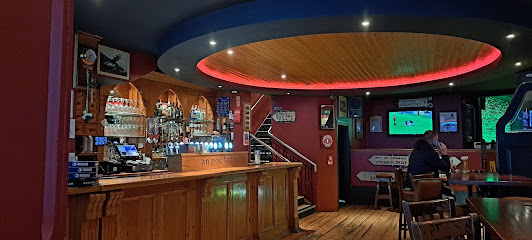
Local Phrases
-
- HelloDia dhuit
[dee-ah gwit] - GoodbyeSlán
[slawn] - YesTá
[taw] - NoNíl
[neel] - Please/You're welcomeLe do thoil
[leh duh hull] - Thank youGo raibh maith agat
[guh rev mah agut] - Excuse me/SorryMaith thú/Trua
[mah hoo/troo-ah] - How are you?Conas atá tú?
[kun-us ah-taw too] - Fine. And you?Tá mé go maith. Agus tú?
[taw may goh mah. ah-gus too] - Do you speak English?An labhraíonn tú Béarla?
[ahn law-vree-un too bayr-lah] - I don't understandNí thuigim
[nee hug-im]
- HelloDia dhuit
-
- I'd like to see the menu, pleaseBa mhaith liom an mhenu a fheiceáil, le do thoil
[bah wah lum on vay-noo ah ek-ah-leh, leh duh hull] - I don't eat meatNí ithim feoil
[nee ih-him foh-il] - Cheers!Sláinte!
[slawn-cheh] - I would like to pay, pleaseBa mhaith liom íoc, le do thoil
[bah wah lum ee-uk, leh duh hull]
- I'd like to see the menu, pleaseBa mhaith liom an mhenu a fheiceáil, le do thoil
-
- Help!Cabhair!
[kuh-ir] - Go away!Imigh uaim!
[ih-mee oom] - Call the Police!Glan na Póilíní!
[glawn nah poh-lee-nee] - Call a doctor!Glan dochtúir!
[glawn dukt-oor] - I'm lostTá mé caillte
[taw may kahl-cheh] - I'm illTá mé tinn
[taw may thin]
- Help!Cabhair!
-
- I'd like to buy...Ba mhaith liom ceannach...
[bah wah lum kyah-nukh] - I'm just lookingNíl mé ach ag féachaint
[neel may okh eg fay-ah-khent] - How much is it?Cá mhéad atá air?
[kaw vayd ah-taw er] - That's too expensiveTá sé ró-dhaor
[taw shay roh-gweer] - Can you lower the price?An féidir leat an praghas a ísliú?
[ahn fay-djir lat on prah-gus ah eesh-loo]
- I'd like to buy...Ba mhaith liom ceannach...
-
- What time is it?Cén t-am é?
[kayn tahm ay] - It's one o'clockTá sé a haon
[taw shay ah hayn] - Half past (10)Leathuair tar éis (10)
[lah-hoor tar aysh (10)] - MorningMaidin
[mah-jin] - AfternoonTráthnóna
[trah-noh-nah] - EveningTráthnóna
[trah-noh-nah] - YesterdayInné
[in-ay] - TodayInniu
[in-yoo] - TomorrowAmárach
[ah-maw-rahh] - 1Aon
[ayn] - 2Dó
[doh] - 3Trí
[tree] - 4Ceathair
[cah-her] - 5Cúig
[koo-ig] - 6Sé
[shay] - 7Seacht
[shokht] - 8Ocht
[ukht] - 9Naoi
[nee] - 10Deich
[deh-ikh]
- What time is it?Cén t-am é?
-
- Where's a/the...?Cá bhfuil...?
[kaw will] - What's the address?Cén seoladh atá ann?
[kayn shoh-lah ah-taw an] - Can you show me (on the map)?An féidir leat léarscáil a thaispeáint dom?
[ahn fay-djir lat layr-skawl ah hash-paynt dum] - When's the next (bus)?Cathain atá an bus seo chugainn?
[kah-hin ah-taw an bus shuh hug-in] - A ticket (to ....)Ticéad (go dtí ....)
[tick-ayd (goh dee)]
- Where's a/the...?Cá bhfuil...?
History of Kilkenny
-
Kilkenny's origins stretch back to the early medieval period, with the establishment of a monastic settlement by Saint Canice in the 6th century. This settlement, located on the site of what is now St. Canice's Cathedral, became a foundation for the growth of the city. The round tower adjacent to the cathedral, which dates back to this period, remains one of the best-preserved examples of its kind in Ireland.
-
The arrival of the Normans in the 12th century marked a significant turning point for Kilkenny. William Marshal, the Earl of Pembroke, acquired the area and initiated the construction of Kilkenny Castle in 1195. The imposing structure not only served as a defensive stronghold but also as a symbol of Norman authority. The Normans also established the walled town of Kilkenny, which laid the foundation for its development as a major urban center.
-
The 13th to 15th centuries are often referred to as Kilkenny's 'Golden Age.' During this period, the city became a bustling hub of commerce and culture. The construction of significant buildings, such as the Shee Alms House and the Black Abbey, highlights the prosperity of the era. Kilkenny was granted a royal charter in 1609, affirming its status as a city and enabling it to host the Irish Parliament in 1641.
-
In 1642, during the Irish Confederate Wars, Kilkenny became the capital of the Irish Confederation, an alliance of Irish Catholic nobles and clergy. The Confederation sought to govern Ireland independently from English rule. Kilkenny Castle served as the administrative center for the Confederate government until its dissolution in 1649 following the Cromwellian conquest of Ireland.
-
The Cromwellian conquest of Ireland had a profound impact on Kilkenny. In 1650, Oliver Cromwell's forces captured Kilkenny after a siege, leading to widespread destruction and the confiscation of lands owned by Catholic nobles. Many of the city's medieval structures were damaged or repurposed during this turbulent period.
-
Following the Restoration of the monarchy in 1660, Kilkenny began to recover from the devastation of the previous decades. The 18th century saw a wave of Georgian architecture, with elegant townhouses and public buildings transforming the city's landscape. Kilkenny's economic and cultural life flourished once again, laying the groundwork for its modern identity.
-
In the 19th and 20th centuries, Kilkenny continued to evolve while preserving its rich historical heritage. The city played a role in Ireland's struggle for independence, and the subsequent establishment of the Irish Free State. Today, Kilkenny is renowned for its vibrant arts scene, medieval architecture, and annual events such as the Kilkenny Arts Festival, which celebrate its unique cultural legacy.
Kilkenny Essentials
-
Kilkenny is located in the southeast of Ireland, approximately 130 kilometers from Dublin. The nearest international airport is Dublin Airport. From Dublin, you can take a train from Heuston Station to Kilkenny, which typically takes around 1.5 to 2 hours. Alternatively, you can take a bus operated by Bus Éireann or a private coach service. Car rentals are also available at Dublin Airport for those who prefer to drive.
-
Kilkenny is a compact city, and many of its attractions are within walking distance. For longer trips, local taxis are readily available. Kilkenny also has a local bus service operated by City Direct, which connects key areas within the city. Renting a bicycle is another popular option for exploring the city. Car rentals are available for those who wish to explore the surrounding countryside.
-
The official currency in Ireland is the Euro (EUR). Credit and debit cards are widely accepted in hotels, restaurants, and shops. ATMs are plentiful throughout Kilkenny, making it easy to withdraw cash if needed. It is advisable to carry some cash, especially for smaller establishments, local markets, and rural areas where card payments may not be accepted.
-
Kilkenny is generally a safe destination for tourists. However, it is always advisable to take standard precautions such as avoiding poorly lit areas at night and keeping an eye on your belongings in crowded places. There are no specific high-crime areas targeting tourists, but staying vigilant and aware of your surroundings is always recommended.
-
In case of emergency, dial 999 or 112 for immediate assistance. Kilkenny has a local Garda (police) station and medical facilities, including St. Luke's General Hospital. It is recommended to have travel insurance that covers medical emergencies. Pharmacies are available throughout the city for minor health issues and over-the-counter medications.
-
Fashion: Do dress in layers, as the weather can be unpredictable. Casual attire is generally acceptable, but smart casual is recommended for evening dining. Religion: Do respect local customs and traditions when visiting religious sites. Cover your head and shoulders when entering churches. Public Transport: Do have exact change for bus fares, as not all buses provide change. Don't play loud music or talk loudly on public transport. Greetings: Do greet people with a friendly 'hello' or 'hi'. A handshake is common in formal settings. Eating & Drinking: Do try local dishes such as Kilkenny's famous beer, Smithwick's. Don't tip excessively; a 10-15% tip is generally sufficient in restaurants.
-
To experience Kilkenny like a local, visit the weekly farmers' market at the Parade. Engage with locals at traditional Irish pubs, where you can enjoy live music sessions. Explore the medieval history by taking a walking tour, and don't miss the Kilkenny Castle and St. Canice's Cathedral. For a unique experience, attend the Kilkenny Arts Festival held every August, showcasing local and international talent in various art forms.
Trending Landmark in Kilkenny
-
Kilkenny Castle
-
Kilkenny Castle Park
-
Kyteler's Inn
-
MacDonagh Junction Shopping Centre
-
St Canice's Cathedral
-
Smithwick's Experience
-
Lanigan's Bar
-
Marble City Bar and Tea Rooms
-
Billy Byrnes Gastro Bar & Venue
-
Dunmore Cave
-
St. Mary’s Medieval Mile Museum
-
Woodstock Gardens & Arboretum
-
Tynan's Bridge House Bar
-
Jerpoint Abbey
-
Butler House & Garden
Nearby Cities to Kilkenny
-
Things To Do in Waterford
-
Things To Do in Wexford
-
Things To Do in Limerick
-
Things To Do in Athlone
-
Things To Do in Bray
-
Things To Do in Dublin
-
Things To Do in Cork
-
Things To Do in Ennis
-
Things To Do in Drogheda
-
Things To Do in Kinsale
-
Things To Do in Galway
-
Things To Do in Salthill
-
Things To Do in Killarney
-
Things To Do in Tralee
-
Things To Do in Sligo













